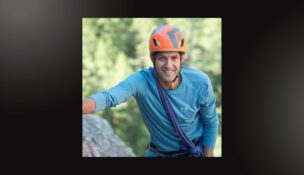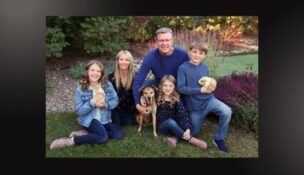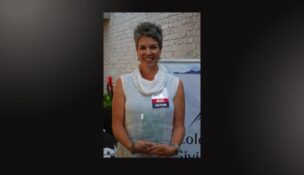Prolific publisher Pat Wiesner wraps it up
After 33 years and 30 magazines, Wiesner puts down his pen
Stewart Schley //September 22, 2016//


Prolific publisher Pat Wiesner wraps it up
After 33 years and 30 magazines, Wiesner puts down his pen
Stewart Schley //September 22, 2016//

If you’ve wandered around the magazine section of any Denver bookstore, you’ve probably seen Pat Wiesner’s work. Over a 20-year run, he published more magazines in more categories than anyone in Colorado. Some of them, like the former Wiesner flagship Colorado Homes & Lifestyles or this magazine, ColoradoBiz, are still found in retail magazine racks or on coffee tables in offices and waiting rooms.
Others, more obscure titles like Trucking Times or TeleCarrier, were mailed directly to a controlled pool of readers inside their business and trade categories. If a budding industry or an overlooked affinity group attracted Wiesner’s attention, he was game to publish a magazine for it. There was Stitches, an apparel industry magazine (“The Canadian-U.S. Trade Pact: How Will It Affect Embroidery?” pondered a 1988 headline). There was Model Railroading (exactly what it sounds like); Healthcare Informatics (for CIOs in the health sector); Recreational Business (bed and breakfast operators); and Senior Market Adviser (financial planners).
At its peak, Wiesner Publishing had more than 150 employees and produced more than $20 million in gross annual revenue. Twice, Wiesner sold groups of magazines to other publishers in deals worth more than $20 million each. For a bootstrapped private company in a notoriously difficult industry, those are impressive numbers. “It was a good business,” says Wiesner, who studied engineering and physics in college. “We got lucky with a couple of magazines.”
But the Wiesner Publishing story isn’t all about the P&L. The company’s origins, its growth during the heyday of the 1990s and the 2002 sale of its remaining assets to a partnership led by Wiesner’s son, Dan, are intertwined with Pat Wiesner the person. And who he would become.
It’s spring, 1982. Wiesner’s out of a job after parting with a Denver trade magazine publisher, Stan Searle, over a disagreement about compensation. With a mortgage and kids, Wiesner has to figure out the next chapter. He starts this way: rents a small office above a Littleton electrical service shop for $200 a month. Buys an Apple IIc computer. Gets hold of a list of executives and employees who work in the barely born satellite communications industry, which Wiesner thinks has big promise.
He knows about it from his work with Searle’s company, which published titles for related categories in the communications and cable TV space. During afternoons, Wiesner lights a fresh cigar and types out the names and addresses, saving 1,000 entries at a time – the maximum allowed by the floppy diskettes that store data from the computer.
Wiesner is working one of the three pillars of the magazine publishing stool: the circulation part. He’ll get to the others, editorial content and advertising sales, later. But the distribution side is key. By mailing his yet-unborn magazine to 10,000 people, Wiesner figures he’ll reach most of the market. And that will give him a solid story to tell advertisers who want to sell their gear.
It does. With two partners, Wiesner launches Satellite Communications, a trade magazine for the budding industry. It makes a tiny profit, but by itself it’s not going to pay the bills. Wiesner’s colleague Jim Fahnestock, a former McGraw-Hill editor from New York, suggests they try something in a brand-new industry category – land mobile radio. This is 1982; five years before the fictional character Gordon Gekko will famously hoist a brick-sized portable phone next to his ear as he walks along the beach during a scene from the movie Wall Street.
But Wiesner quickly can sense they’re onto something. With optimism rising around a new sort of wireless communications capability, technology companies see a big market building before their eyes. Advertisers aren’t just interested in the idea, they’re pulling out checkbooks and booking ad space on the spot. With Wiesner laying out pages and Fahnestock writing and a third partner, Phil Cook, selling advertising, they publish the debut issue of Mobile Radio Technology in 1983. It’s an instant hit.
“We sold $90,000 of advertising in the first issue and never looked back,” Wiesner says. “That’s what made the company.”
Wiesner had tasted success, and wanted more. He parlayed the cash flow from an early trio of technology magazines into new launches across fields both related and foreign. In 1985, he bought two magazines, Colorado Business and The Press, a trade periodical for the screen-printing industry, from fellow Denver publisher Bob Titsch.
He sold Mobile Radio and several companion titles to publisher Primedia, netting cash that would help fuel his expansion. Wiesner added more employees, moved to a bigger office in Littleton, launched new magazines and in 1989 acquired Colorado Homes & Lifestyles, whose lavish photo spreads and sometimes-breathless copy celebrated the beautiful, the bold and the breathtaking in Colorado interior design and home architecture.
From afar, the Lifestyles acquisition seemed odd: Wiesner’s mostly business-to-business publishing company, with an early heritage in technology trades, had crossed the line into the entirely different world of consumer magazines, where advertising practices, circulation management and editorial content demands are very different. But the deal also reflected a quiet confidence Wiesner had maintained all along in the fundamentals of publishing.
“I didn’t care that it was consumer,” he told me. “The idea was: Who was going to read it, what’s going to make them read it, who’s going to sell it and who’s going to run it. If all that is clear, and you can afford it, why not try it?”

Wiesner did, launching a category that would grow to include like-minded magazines in Atlanta, St. Louis and Seattle, along with brand extensions like Colorado Mountain Living and Log Home. During the same span, he added more titles in the apparel, lodging and health-care categories, launched a custom publishing division that produced magazines and newsletters for the likes of HealthOne and the Denver Center for the Performing Arts, and began running trade shows and events before selling the remaining pieces of his company to his son Dan, one of five children who have all worked for Wiesner’s company.
It was during this run that Wiesner began sharpening his approach to management, drawing on a hodge-podge of influences and experiences. A big one was legendary adviser Dale Carnegie, whose courses in business success and human relationships left a big imprint on Wiesner and his wife, Janet. Both had worked briefly in the Carnegie organization when they lived in northern California in the late 1970s, and both embraced a core mantra about encouraging individuals to “become the person they dream of becoming.”
The notion is central to the Wiesner Way: Invest in people, and they’ll pay you back in effort and accomplishment. It’s a philosophy and an approach that came to Wiesner in pieces, stitched from varied experiences, some positive and some bruising, but almost all work-related.
For Wiesner, the workplace was one giant training ground, full of personalities and ideas and experiences that were more influential in shaping his character than his childhood upbringing in Buffalo, where his parents, working-class immigrants from Europe, struggled through the Great Depression.
“My parents were normal, hard-working, German-Irish people who didn’t pay too much attention to their kids,” Wiesner says. “We didn’t have a starry relationship.”
Instead, Wiesner learned lessons about management, and about life, from a succession of jobs in publishing and sales. An electronics firm in Seattle that had hired him to manage its national sales effort quickly turned the tables, enlisting Wiesner as a “hatchet man” charged with firing the company’s independent reps. He ended up quitting.
Later, when Searle, the Denver publisher, refused Wiesner’s request for a share of equity in Searle’s growing publishing company, it poisoned the relationship between the two men, but it also proved instructive.
“I really liked the idea of, everybody rises up together, and if we’re going to be successful, everybody should be successful,” Wiesner says. “So around that simple thought we built the Wiesner Publishing Company.”
Writing has been another influence. Wiesner is a departure from the typical magazine publisher in that he got his start on the editorial side, writing articles and editing copy for an electronics industry newspaper in Chicago after a brief stint selling laminated circuit boards. More commonly, publishers rise up from the sales side, where relationships with advertisers rule the day.
This familiarity with the content side of the business – chasing down sources, fetching quotes, writing headlines, proofreading copy – would stay with Wiesner throughout his career, influencing his work as a columnist and, importantly, endearing Wiesner to writers and editors who are often quick to exhibit a chip-on-the-shoulder mistrust of the business side.
“Pat had the instincts of a true journalist,” says Jeff Rundles, who edited the then-named Colorado Business from 1989-1993, in an email. “I always thought of Pat like he was Ben Bradlee at The Washington Post during Watergate; a lot of trepidation, proving and sourcing, but in the end we did the right thing.”
Wiesner credits a long-running column he wrote for ColoradoBiz with forcing him to sharpen his own thinking about management. In plain-spoken, sometimes revealing language, Wiesner has chronicled the ups and downs of his own career, passing along advice, strategy and tips for dealing with employees, customers and bosses.
He regularly drew his material from his own life, often finding meaning in small moments. Wiesner once wrote about his experience in piloting an airplane from Crested Butte to Denver with a late-arriving passenger aboard: John Elway. After Wiesner had eased the airplane down to a near-perfect landing at Centennial Airport, the former pro quarterback offered a simple statement of praise: “You’ve done this before.”

The solitary sentence from the NFL legend was hugely meaningful to Wiesner, who wrote a column about the experience, emphasizing the importance of praise as a motivator in the workplace. In a 2015 column, Wiesner expressed astonishment at watching the musician Tito Puente Jr. vacate his drum set and yield the stage to his backup band, inviting them to take over his instrument, and center stage, under the spotlight. To Wiesner, the moment was telling:
“He seemed to understand that a leader’s job is not to be better than everyone on the team, but to bring out the best in each team member,” he wrote. His canon of work includes some mea culpas, too. Wiesner once apologized publicly in a column for treating a salesperson poorly. She left the company; he learned a lesson.
“He writes from the heart,” says Janet Wiesner, who met Pat for the first time at a party hosted by Notre Dame’s physics department in the fall of 1958. “He writes just the way he talks.”
This insistence on presenting a genuine sense of interest in the other guy probably helped him navigate the challenging transition from tiny startup to mid-sized company, says Denver CPA Dick Hayes, who has worked with Wiesner Publishing since 1984.
“I think he was a pretty good gauge of talent,” Hayes says. “He’d set expectations and get out of the way, and say, ‘I’ll help if you want,’ but he allowed people to go out and self-express and do it their way.”
It was a philosophy that went beyond the Xs and Os of day-to-day operations. Wiesner also took a genuine interest in the well-being of employees, going so far as to offer a bounty of $300 to any staffer who quit smoking (more than 75 took him up on the deal).
For some employees, the I-believe-in-you approach made for irresistible motivation. “He was kind of like a really strict grandparent who you just adored,” says Amy Cosper, a former Wiesner editorial staffer who is now editor in chief of Entrepreneur magazine.
Finding ways to inspire employees was one ingredient in Wiesner’s business success. But it takes more than esprit-de-corps to sustain longevity in publishing, a business where high embedded staff costs and capricious advertisers can make for many restless nights. Friends and associates say one of Wiesner’s strengths as a business owner was his patience and steadiness.
Paul Maxwell, a longtime Colorado publishing executive who lives in Summit County, recalls meeting Wiesner in the early 1980s as both men were launching new publications in what was then a highly active Denver publishing community. Maxwell was impressed by Wiesner’s matter-of-fact approach.
“Pat was always calm and steady – he rarely made mistakes,” Maxwell told me.
Others agree. Alex Cranberg, the president and chairman of Denver energy exploration firm Aspect Holdings, knows Wiesner from his role as a board member for the not-for-profit ACE Scholarship Foundation, which Cranberg chairs. During board discussions, Cranberg says, “Pat’s the kind of guy who would take a strong, particular position because he believed in it, not to be argumentative. But he would do it calmly. He would never let emotion rule the day.”
These attributes are apparent when I attempt to get Wiesner to buy in to a theory: that his willingness to learn to fly airplanes – it started with a $10 lesson Janet Wiesner purchased for her husband on a whim – says something about a wider willingness to take risks as a business entrepreneur. His response is classic Pat Wiesner: He listens carefully, considers my point. And then ever-so-gently rejects it.
To Wiesner, it’s not about risk and chance and dramatics. He’s a physicist, remember. To Wiesner, success in life and in business comes down to practical, learnable, demonstrable traits. Did he ever sweat out a Friday when there wasn’t enough cash in the bank to make payroll? No, says Wiesner. He always made provisions in advance to borrow funds to even out anticipated cash flow valleys. Did he experience a palpable sense of loss when he sold his company to his son Dan and a partner in 2002? Not really.
“It was time,” he says. Is it terrifying to get behind the controls of a 30-passenger DC-3 and whisk off into the sky? “You train for that,” is Wiesner’s response. So much for the theatrics.
Getting to Wiesner’s home in Castle Pines Village requires permission from an entrance attendant, a perplexing progression of left turns and a steady incline around curved streets where lush lawns are decorated with sturdy green pine trees. The home is comfortable and tastefully appointed, not ostentatious. Downstairs, Wiesner has decorated a basement wall with mementos of his life’s work: covers of magazines that ran the gamut from hits (Homes & Lifestyles) to flops (Martial Arts Business).
A polished wooden propeller juts from an adjacent wall, surrounded by framed photos of airplanes Wiesner has owned or piloted, or both. Touring the memorabilia, he stops now and then to comment, remembering the odd story here, the background history there. The man who convinced him to launch a martial arts magazine introduced himself by telling Wiesner he could kill him (Wiesner, that is) with a sharp blow to the neck. Balance, a magazine geared to women physicians, failed after the realization that female doctors tended to prescribe fewer medications than their male cohorts, reducing their appeal to pharmaceutical advertisers.

When Wiesner bought Colorado Homes & Lifestyles, the previous owner insisted on closing the deal in Wiesner’s private jet. They did, much to the distress of an accompanying attorney who became airsick during the signing. For every magazine there’s a story, and here on the wall is the collected history of a lifetime spent selling ad space, trimming articles, resizing photographs, choosing fonts, hiring writers, making numbers.
Looking over the portraits produces a sort of quietness. The publishing life that sustained and energized Wiesner for close to three decades is behind him. He turned 80 in March. When I invite him to reflect on what’s next, he talks about visiting recently with a physician who told him he’ll live at least another 10 years, and a financial planner who advised him to make sure the money lasts for another 15. (Wiesner’s siding with the financial planner.)
In the meantime, he wants to remain vital, engaged. The week before we met at Wiesner’s home, he attended a food industry trade show at New York City’s Javits Center, trying to round up distributors for a Honduras-based chocolate-making business in which the Wiesners have invested. It’s part of a wider commitment that began when Wiesner’s airplane crew helped deliver food and medical supplies to the Central American country after the devastating Hurricane Mitch of 1998. As a supporter of a not-for-profit organization, the Adelante Foundation, Wiesner helps steer micro-finance loans to Honduras families. At home, a new entrant into Wiesner’s life is an acoustic guitar. At 80, he’s determined to learn to play, with help from both a human instructor and mobile app that helps tune the strings. Later in the month, Wiesner will jet off to Costa Rica with a grandchild, one of 16.
In the meantime, Wiesner still stops by occasionally at the office where his sons Dan and Mike work, chatting with editors, glancing at magazine covers and occasionally checking in on the new packaging designs for the chocolate line. Whether Wiesner has officially penned his last column for ColoradoBiz is a subject of some light-hearted controversy. (ColoradoBiz was one of several magazines that remain in the family fold after Dan Wiesner and his partner purchased them.) Wiesner worries he’s lost touch with the Colorado business community and wants to pass the baton to someone else. But he jokes that nobody in the office has the courage to fire him.
We’re sitting on Wiesner's outdoor deck. He’s dressed in khaki slacks and a lavender Polo-style shirt, sipping a Vernor’s ginger ale (worried he was drinking too much, Wiesner quit alcohol in the 1960s.) A light rain begins to fall.
I ask him about mortality: whether he thinks about it. What he thinks about it. He waits for a moment, and then produces a physicist’s answer:
“At the speed of light, time stops,” he tells me. “Maybe that’s a comfortable, reasonable parking space for all the lost souls.”
Then, in a manner I’ve become accustomed to, he delivers a self-effacing retreat.
“Or not,” shrugs Wiesner.
I leave thinking about it. If there is an afterlife of some sort, it’s a fair bet Pat Wiesner will survey the room, shake some hands, figure out who’s who. And what they’re interested in. And if there’s any symmetry in the great beyond, he’ll publish a magazine for them.

























